How to Chip in Golf: Perfect Your Chipping Technique With Expert Tips And Drills
Learn how to chip in golf with the help of PGA Master Pro Anders Mankert, who shares a gold mine of helpful tips which you can use to improve your short game
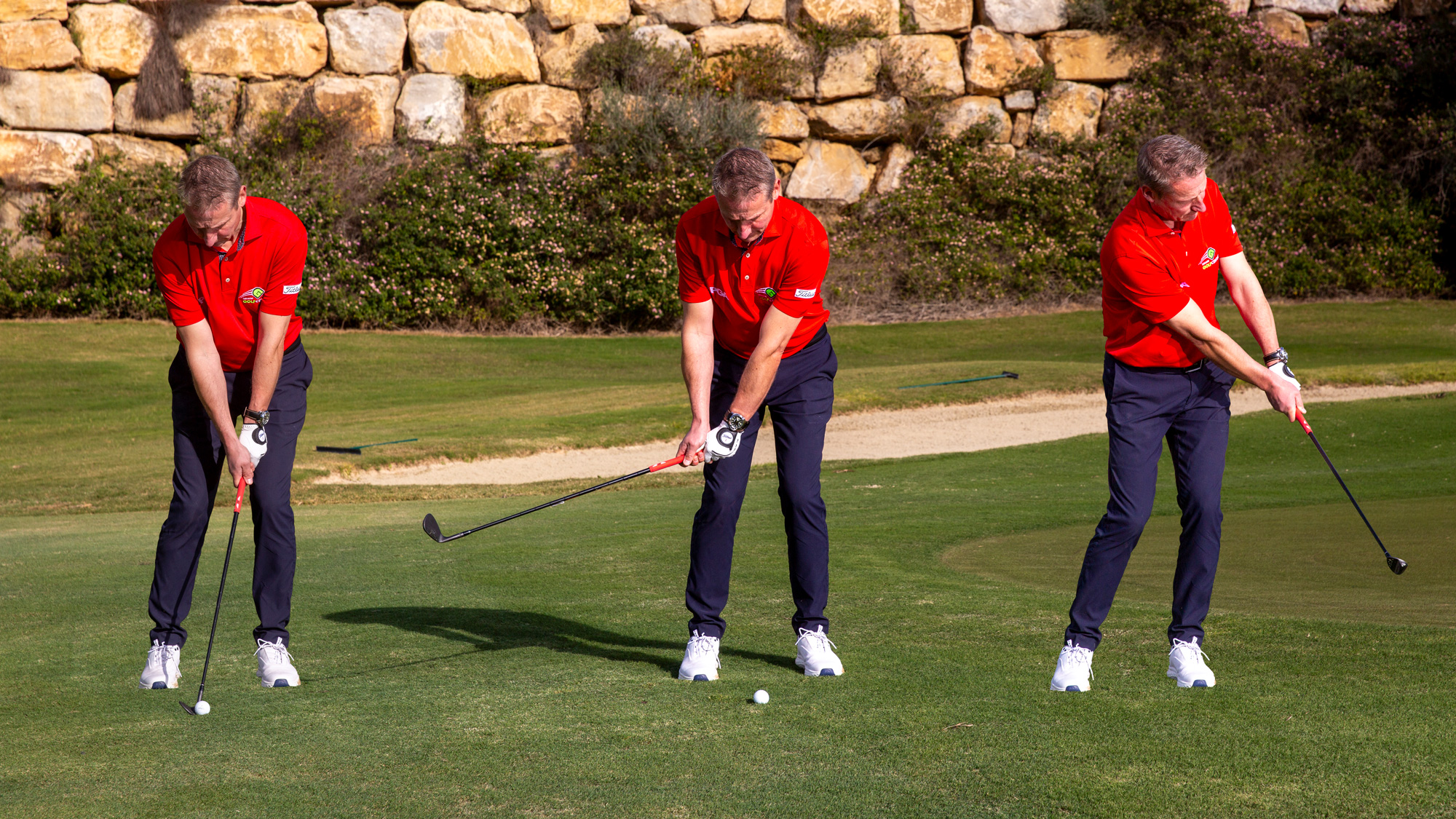

Learning how to chip in golf is like learning to swim, it's a pretty essential skill that with regular practice should become easier and easier over time.
There are plenty of different chip shots that players could opt to use on the course, like the one stop and hop or the chip and run, but understanding the basics of chip shot fundamentals should be your first port of call.
Chipping is the subject of some of the most important golf tips for beginners, but players of all abilities struggle with their short game. In this helpful article, Golf Monthly Top 50 Coaches Anders Mankert and Paul Foston share their best tips and drills to form our ultimate guide on how to chip in golf...
HOW TO CHIP IN GOLF
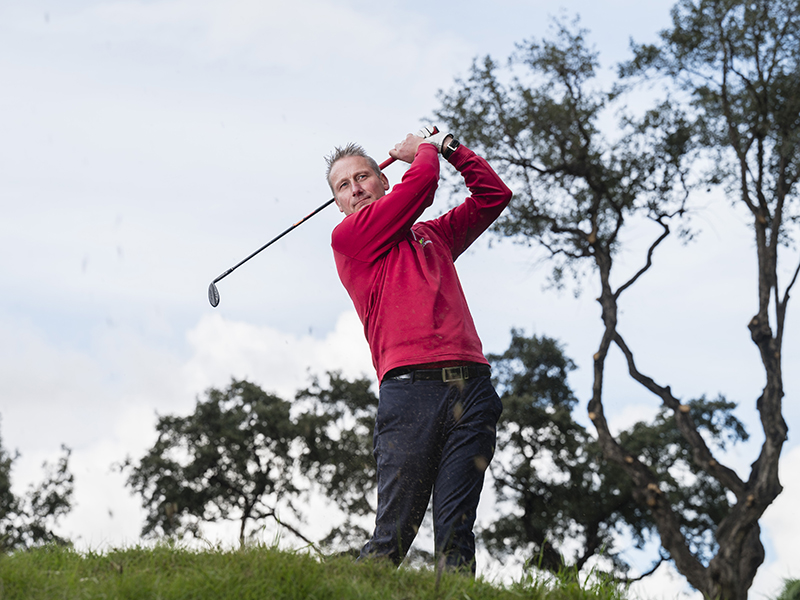
Anders is the owner and head professional at Leicester Golf Centre, with a coaching career spanning more than 28 years. In 2024, Anders received the title of Master PGA Professional - becoming only the 65th person in history to be awarded that accolade. His vast coaching experience has transformed the golf swing of many amateurs and professionals.
CHIPPING TECHNIQUE
It goes without saying that having a perfect grip and correct ball position are critically important, as is the case with many types of golf shot. A standard chip shot does not require anything to be open at set-up. We’re not talking about a flop shot, here. What I always like to see is a square set-up – that’s a square stance and a square base (see picture below). Poor chippers tend to lean back in an attempt to lift the ball in the air.
When the sternum is behind the ball and the weight is on the trail leg, you’ll most likely hit your chip shot fat or thin as you have moved the swing’s low point to opposite your trail foot.
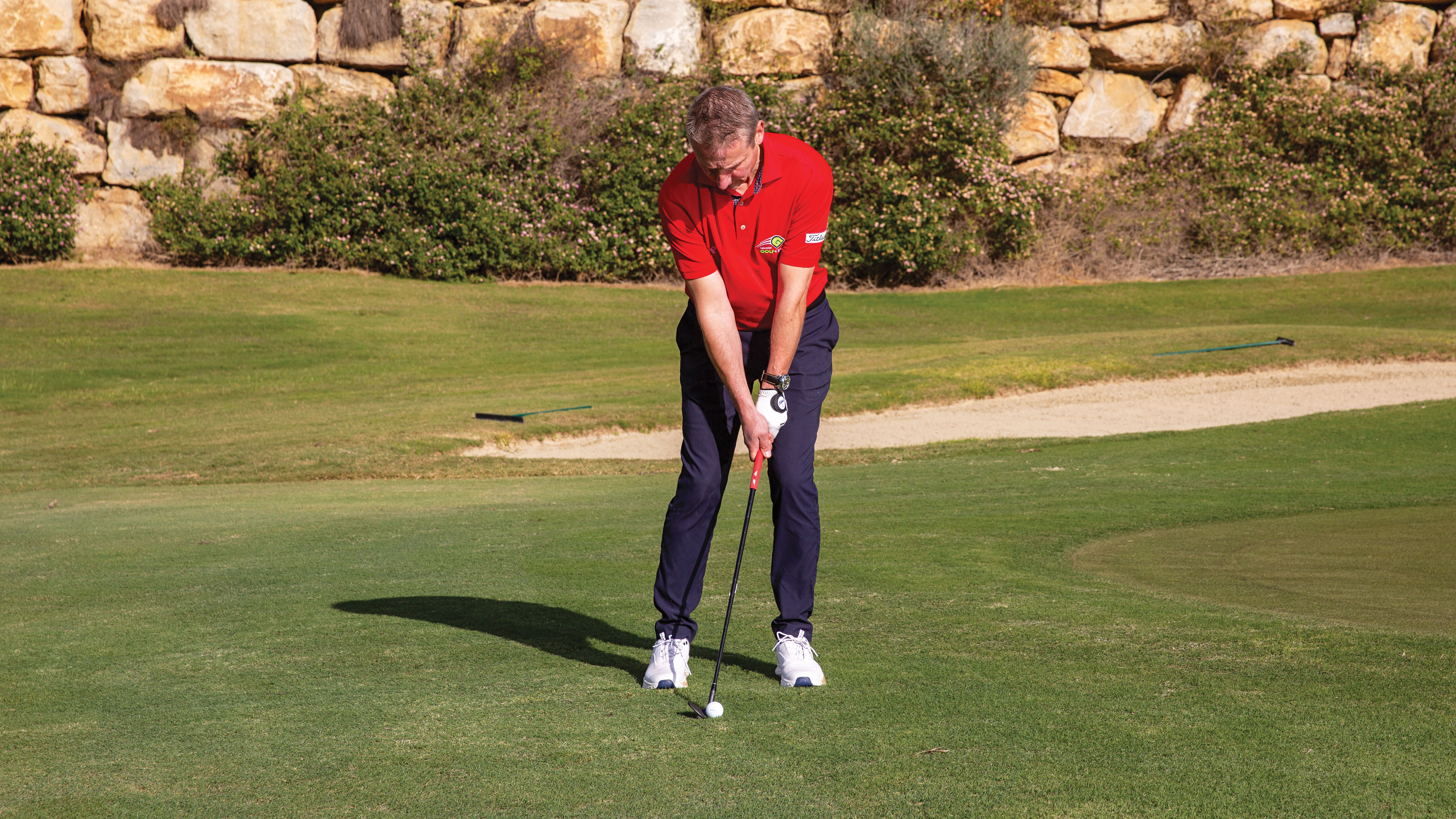
This is the perfect set-up for a standard chip shot
It’s the lead knee that you’re turning around, and the low point of your swing needs to be opposite that. If I let this pivot point move across to my trail knee or even somewhere in the middle, my strike is going to be poor. Having a clear image in mind of your lead knee as the pivot point can help you to make good contact. That will help you to get control over the golf ball and eventually learn how to spin your chip shots.

Try thinking of your lead knee as the pivot when you are playing chip shots
Remember, the fundamental part of the chipping technique is to feel your weight being slightly forward onto your lead side. With your weight forward and your sternum ahead, you move the swing’s low point target side of the golf ball.
Subscribe to the Golf Monthly newsletter to stay up to date with all the latest tour news, equipment news, reviews, head-to-heads and buyer’s guides from our team of experienced experts.
In the picture below, note where my hands are just as the ball has taken off: slightly forward of their starting position. My glove is now closer to the flag than it was at set-up, which takes a little loft away but ensures a good strike.
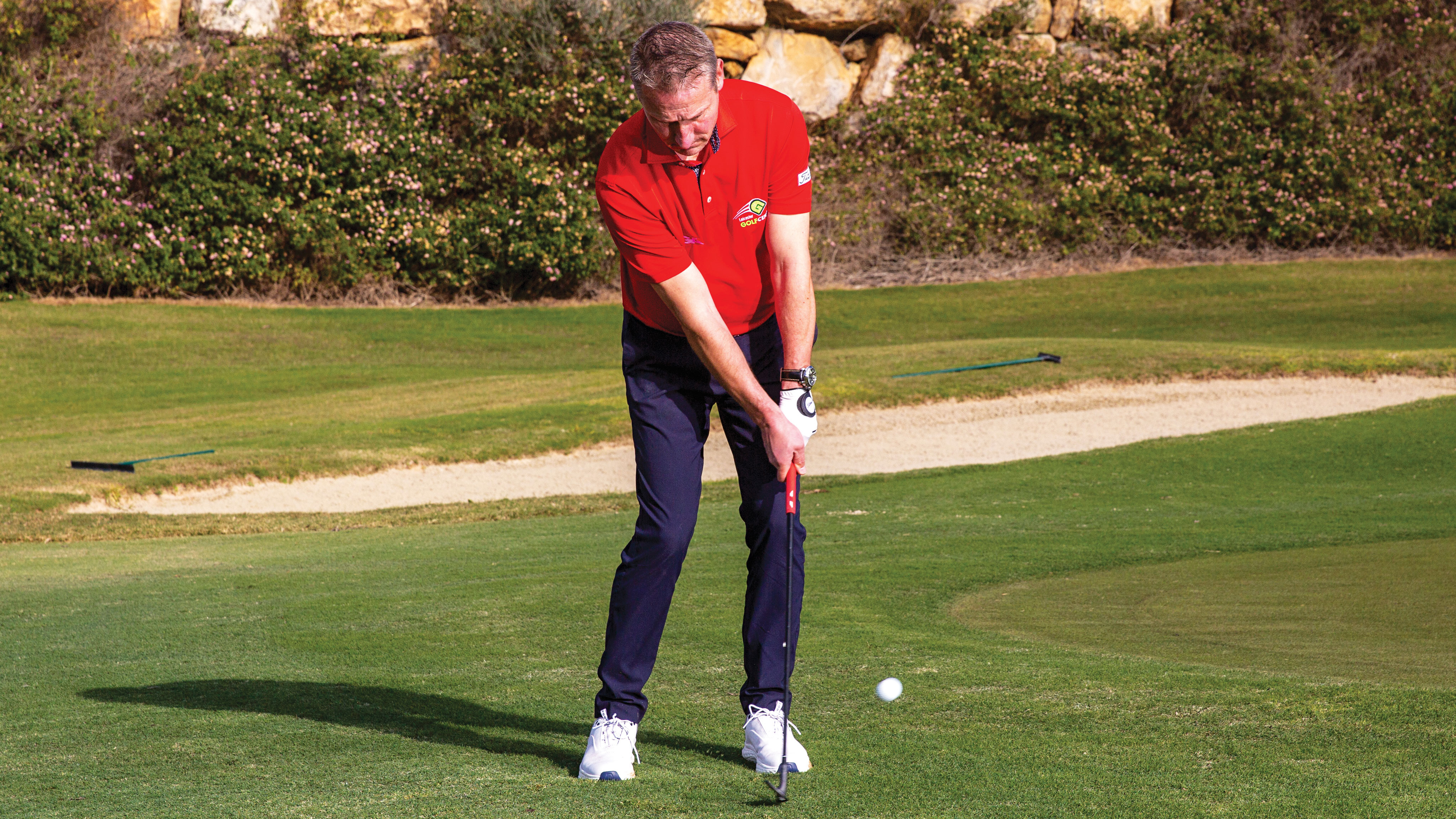
The fundamental part of the chipping technique is to feel your weight being slightly forward onto your lead side
SETUP AND CLUB SELECTION

Paul has worked with a number of Tour professionals over the years, and is proud to have successfully coached over 40,000 students. In 2005, he set out to design his own academy with a ‘world class’ coaching infrastructure of technical advancement and a tailor made short game layout to practice every real life challenge experienced on course.
A good rule of thumb is that if there are no slopes, bunkers or mounds to go over, you should play a lower chip shot – often called the chip and run shot - to get the ball running as soon as possible.
You should also bear in mind that if your ball is only just off the green, or the fringes are cut quite tight, the putter may often be an even better option. For the simple greenside chip, narrow your stance and set more of your weight on your left side – about 60-65% - with the shaft leaning forwards a little.

For a chip shot, narrow your stance and keep more weight on your lead side at address and as you play
Your sternum should be slightly ahead of the ball. I actually like to set my feet and hips a little open to the target, and I grip down the club a little (see picture below).
Resist the temptation to get the ball too far back in your stance, as this will get the shaft leaning too much and prevent you from using the bounce in the sole of the club properly. It will increase the risk of you simply sticking the leading edge into the ground at impact and duffing the shot.
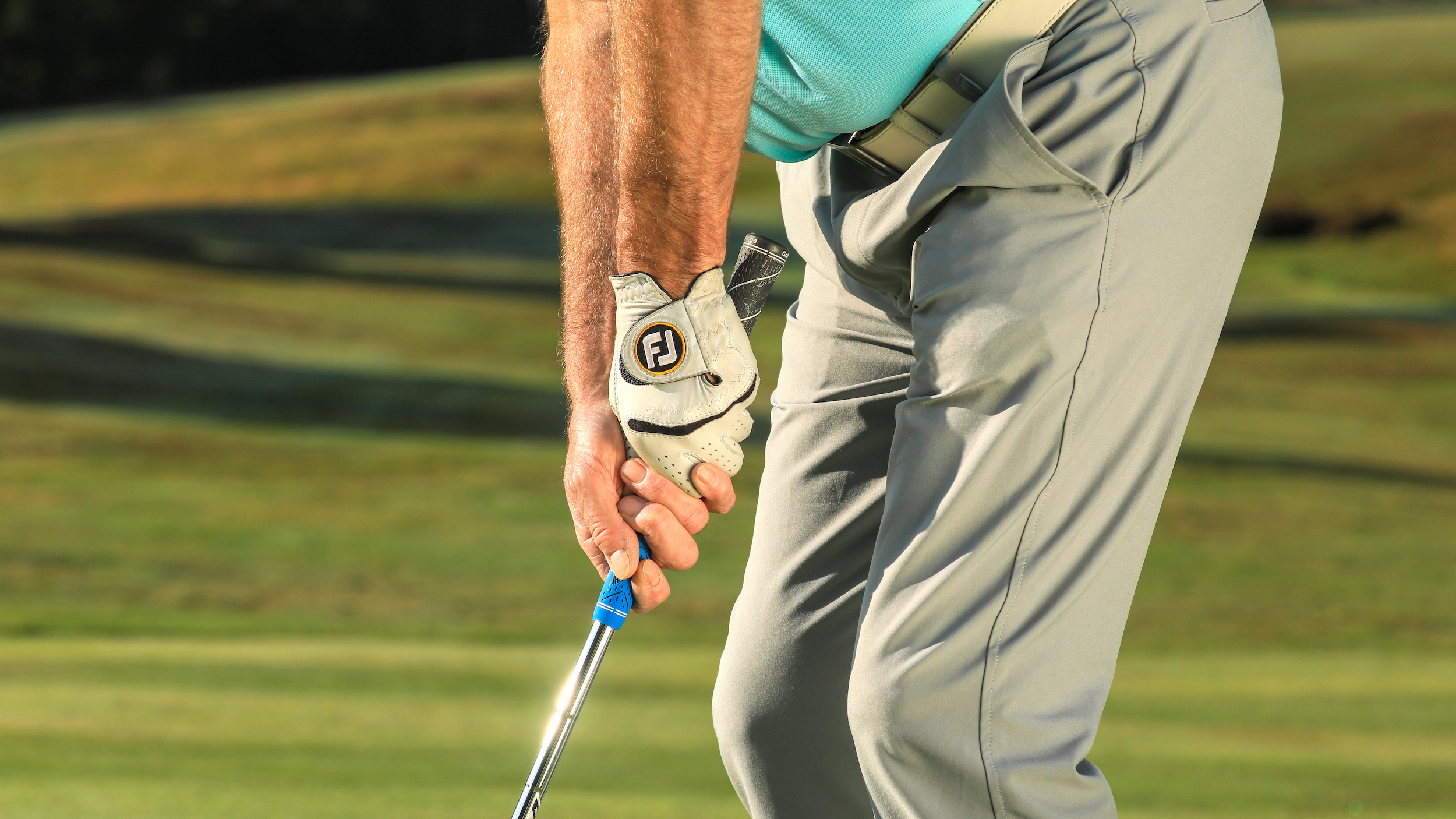
Don't be afraid to hold the club quite a way down the grip for added control when chipping
From here, retain the triangle created between arms and shoulders and simply rock them back and through with very little wrist break. Crucially, keep the weight favoring your lead side throughout rather than shifting to the trail side as it should in a fuller shot.
Keep everything moving forward through the shot and allow your eyes to follow the ball. Don’t stop your head at impact or keep it down too long as you’ll end up just flicking at the ball, resulting in inconsistent striking.

Top Coach Paul Foston demonstrates the triangle you should maintain between shoulders and arms with virtually no wrist break
Here's another piece of advice: don’t automatically reach for one of your wedges unless you need to carry a downslope on the green, for example. For the running chip, a 9- or 8-iron, or maybe even lower, will prove a more reliable option for many.
Once you have mastered how to chip in golf, you can play shots of varying lengths simply by changing club - perhaps a running 7-iron up the green to a back pin. Getting the ball on the ground and running as soon as possible is a great philosophy for a more risk-free approach to chipping.
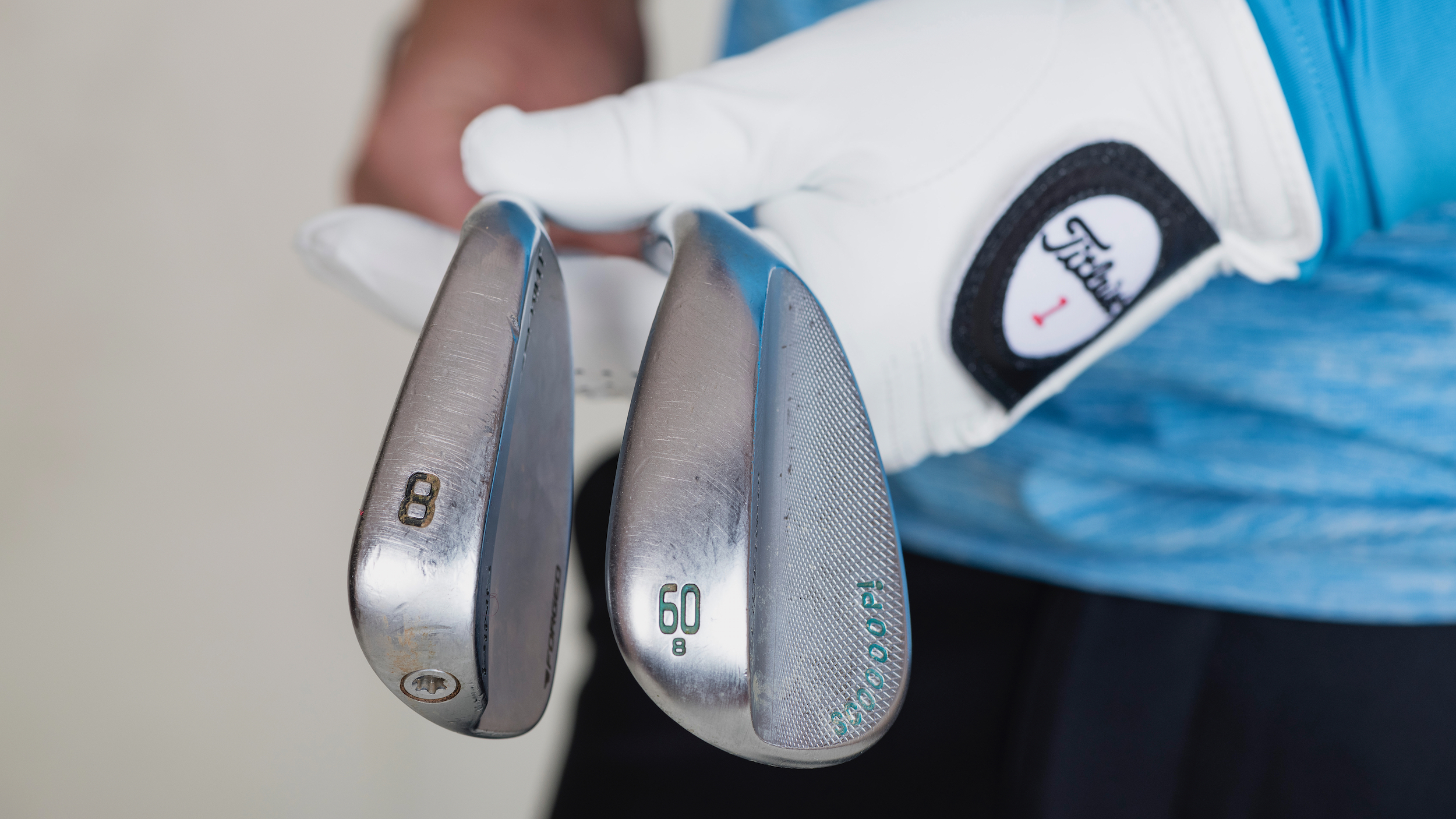
Don't automatically reach for the lob wedge - a lower-lofted club will usually be a much safer choice
SAFETY FIRST CHIPPING
One of the most frequent causes of poor chipping is the heel of the club digging in at impact leading to heavy contact. A great way to take this risk out of the equation, especially from tricky or muddy lies, is to address the ball with the toe of the club down more and the heel a little off the ground.
This type of chip shot won’t come out with spin, and won’t work in all scenarios, but in many instances it’s a great way of almost guaranteeing the strike to reduce the risk of a duffed chip. It's worth practicing some of the best chipping drills from all different types of lie to ensure you can create conditions similar to those you might encounter on the course.
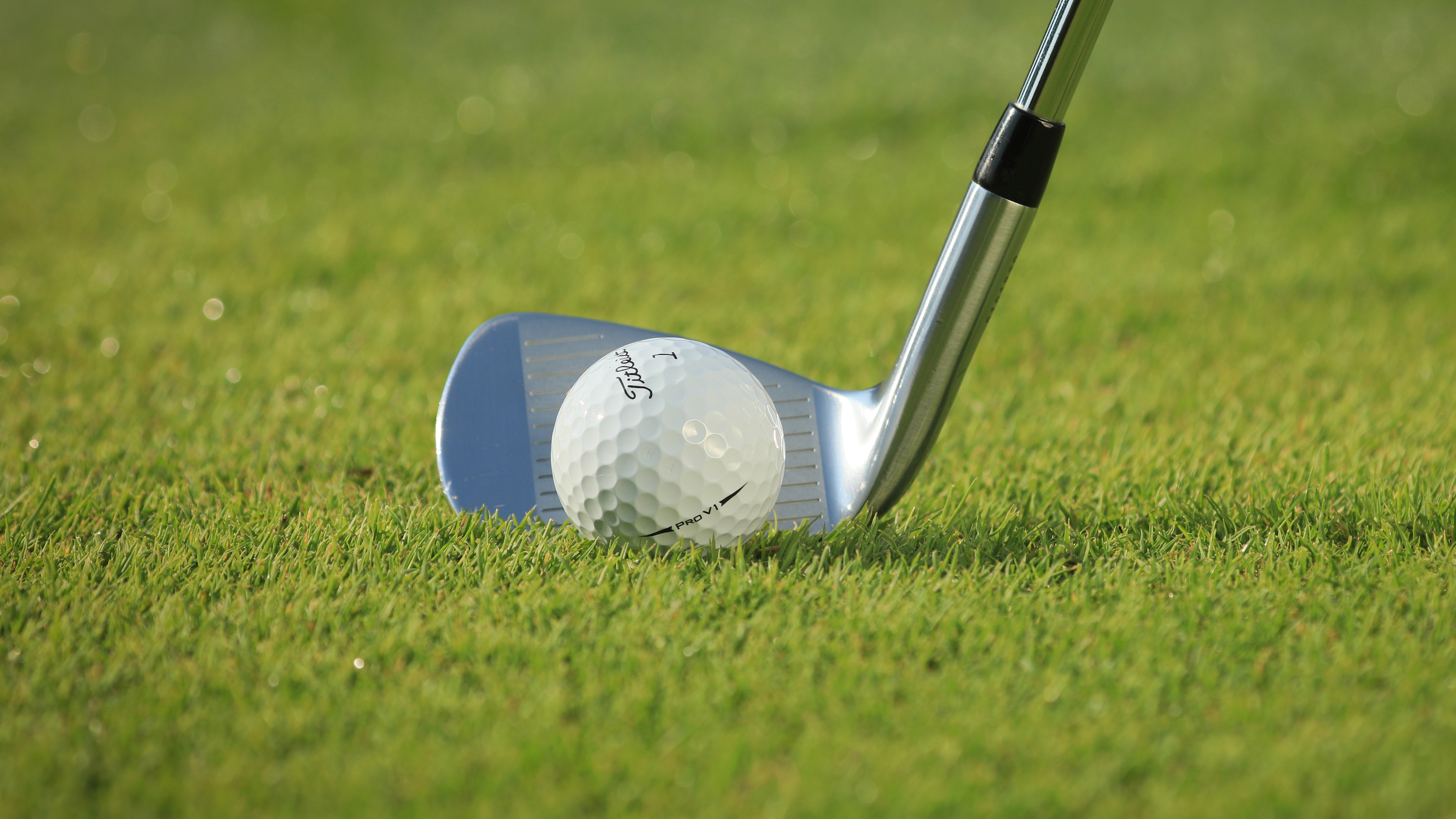
Playing chips with the toe of the club down more will help stop the heel digging in, especially from trickier lies
What drills can help me with my chipping?
One of the most effective chipping drills involves playing with one hand. Remove your lead hand and place it on your thigh; then, grip the club as you normally would with your trail hand, without too much pressure, and just take a few short swings. When you've taken the club back, just feel as though gravity takes over to just drop it naturally onto the ball through the hitting area.
Why am I hitting my chip shots fat?
Often it's down to not controlling the low point through impact properly. One of the main faults is where the hands are too far forward, which presents the leading edge to the ground. Position the ball just inside the back foot, with the shaft pointing just to the left of your belt buckle. Meanwhile, the sternum should be in front of the ball at address, at the top and at impact, which allows you to use your shoulders and arms to move the club through the hitting zone.

Michael has been with Golf Monthly since 2008. A multimedia journalist, he has also worked for The Football Association, where he created content to support the England football team, The FA Cup, London 2012, and FA Women's Super League. As content editor at Foremost Golf, Michael worked closely with golf's biggest equipment manufacturers and has developed an in-depth knowledge of this side of the industry. He's a regular contributor, covering instruction, equipment, travel and feature content. Michael has interviewed many of the game's biggest stars, including seven World No.1s, and has attended and reported on numerous Major Championships and Ryder Cups around the world. He's a member of Formby Golf Club in Merseyside, UK.
- Anders MankertMaster PGA Professional and Golf Monthly Top 50 Coach
- Paul FostonTop 50 Coach
You must confirm your public display name before commenting
Please logout and then login again, you will then be prompted to enter your display name.